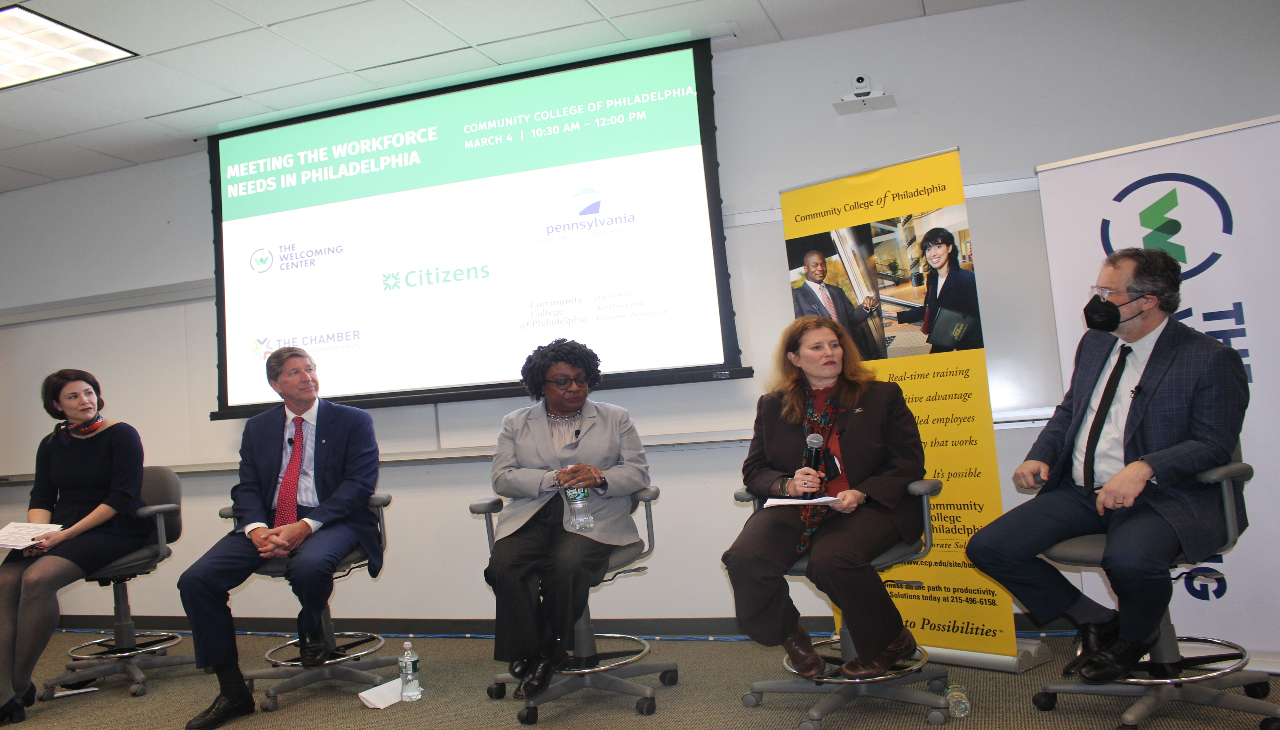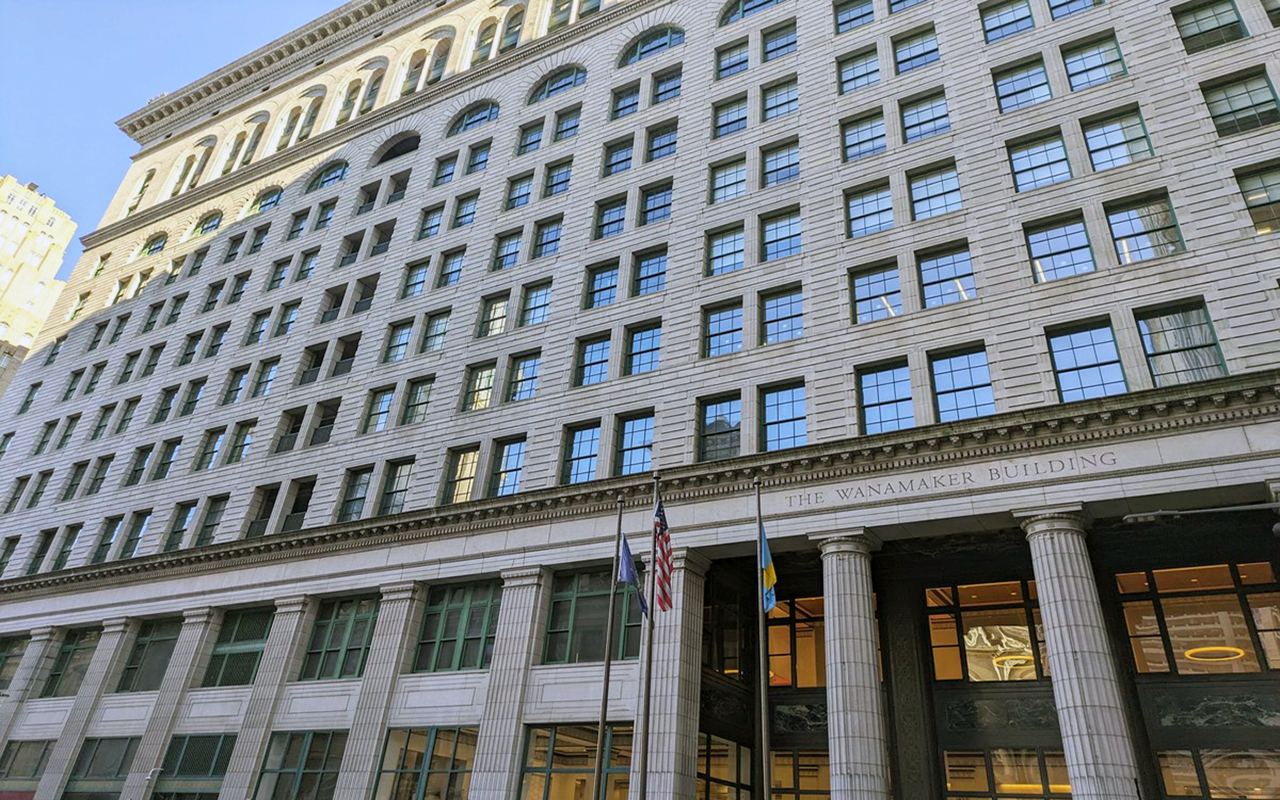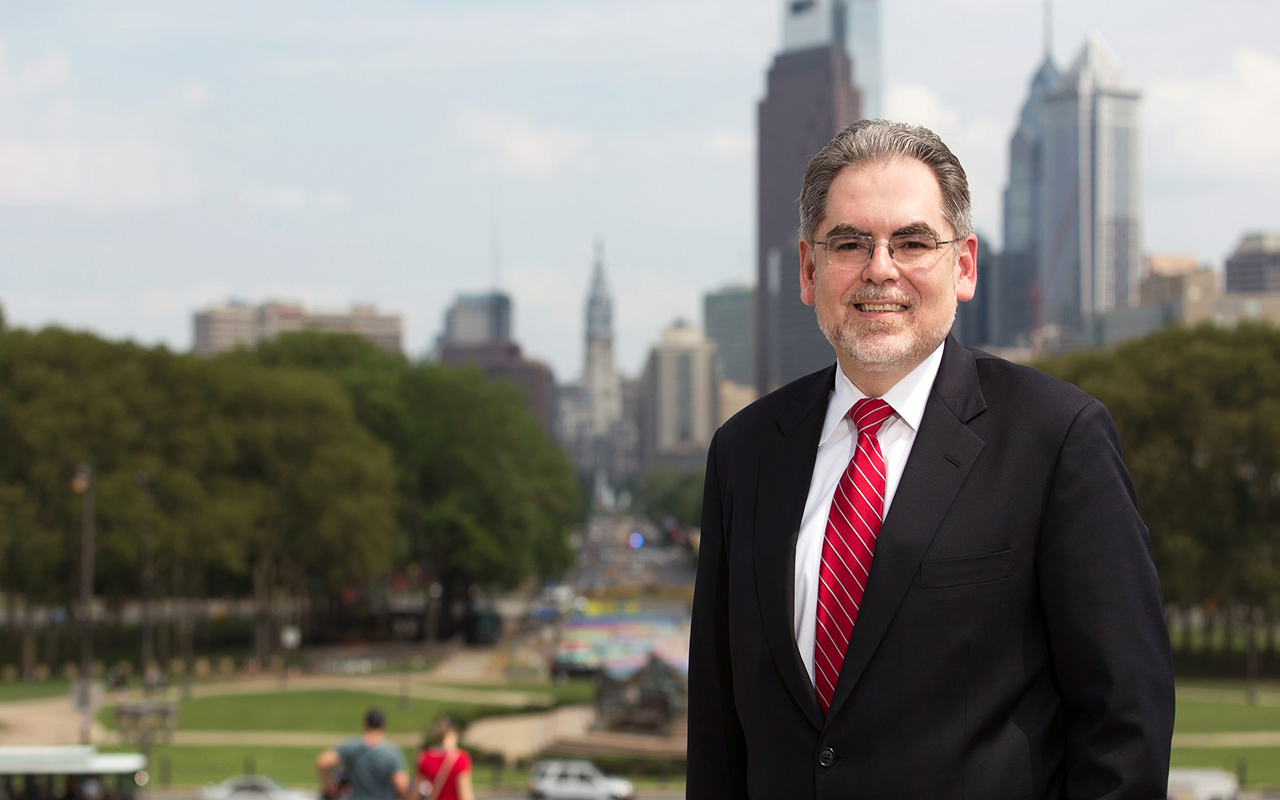
Local leaders discuss challenges, opportunities facing Philly’s workforce
The pandemic has exacerbated challenges to Philly's workforce, and now is a good time to address them in an effort to promote financial empowerment.
Philadelphia is plush with various opportunities for workforce entry and career advancement.
However, for some vulnerable communities, those opportunities can be difficult to come by.
On Friday, March 4, a group of local leaders dedicated to improving workforce development in the region participated in a panel discussion at the Community College of Philadelphia to discuss some of the challenges facing the city’s workforce, and steps to address them.
“[This] conversation couldn’t come at a more important moment,” said Sarah Steltz, vice president of economic competitiveness at the Chamber of Commerce for Greater Philadelphia.
She highlighted the changing dynamics of the workforce due to interrelated factors.
“We’re navigating a swing from the devastating job losses of the early pandemic to an unemployment rate of 3.8%. We’re seeing women step away from the workplace in record numbers,” added Steltz.
According to the National Women’s Law Center, the women’s labor participation rate is at its lowest since 1988. Meanwhile, according to the U.S. Bureau of Labor Statistics, at least 4 million workers left their jobs in the second half of 2021 alone, the highest rate in at least 20 years.
While employees are experiencing wage growth, they also have to balance concerns about inflation, health, safety, childcare and many others.
Despite these challenges, there are a number of high quality jobs on the market. The next step is connecting quality candidates to those job opportunities.
“For Philadelphia to grow its potential, we need to grow equitably, opening up access,” said Steltz.
Taking A Different Approach
Among the many changes brought about by the pandemic is the switch of many jobs to digital means.
For businesses to survive, the flexibility to allow for virtual and remote work is paramount. Equally crucial is for all employees to have the access to those resources, as well.
“It became very apparent through the pandemic… that this country is not operating on a level playing field and we need to create more opportunities for folks who might be people of color or low-to-moderate income folks,” said Bruce Van Saun, chairman & CEO of Citizens Financial Group.
As the labor market changes, so too should business leaders’ mindsets and business models.
Van Saun noted that many business leaders are starting to see that doing the right thing aligns with business needs, which is increasingly important given the current labor climate.
However, to make a true impact and upskill workers to fill available positions, it will take a collaborative effort.
“If the folks in the public sector, higher education, the private sector, nonprofits start to build this muscle in terms of pulling people, upskilling and delivering them to companies who are in dire need of talent this can be game changing,” said Van Saun.
Sheila Ireland, deputy secretary at the PA Department of Labor and Industry, added that as business leaders think differently about the way in which they do business, they can choose one of two options.
“I’ve always thought employers have two choices,” she said. “You can buy talent, or you can build it.”
In this current job market, building it is what can lead to a more sustainable, and subsequently thriving, workforce.
The Great Resignation’s Ramifications
The past two years since the pandemic began has exacerbated what Ireland notes as “a trend that’s been continuing.”
The labor force participation rate has been seeing a steady decline since the start of the millennium.
While statistics show that U.S. workers are leaving their jobs at record rates each month, 94% have said they would not have done so had their respective organizations shown more investment in their professional development.
Carol de Fries, vice president of workforce development & innovation at the Community College of Philadelphia, said that creating a pipeline of new workers through apprenticeships and training programs is key to addressing this trend.
“I think that is a model that we need to continue,” said de Fries. “Whether we’re bringing in individuals from the schools, or if we’re bringing in individuals from immigrant populations, or other populations that we traditionally don’t see entering the workforce as easily.”
Creating that pipeline is also about understanding the different dynamics employees need in order to excel.
Peter Gonzales, president & CEO of The Welcoming Center, highlighted the importance of having that level of understanding.
“Employers need to share values with their employees,” said Gonzales. “The idea that employers can become more dynamic and more flexible, recognizing that the person may not fit into a 9-to-5 or five-day-a-week job anymore is going to be critical for the future.”
The pandemic has created entirely new dynamics that, in some cases, make the prospect of those traditional work shifts no longer plausible.
RELATED CONTENT
Ireland added that as a result of the pandemic, many have been left scared and traumatized.
“When [people] are traumatized and scared, they rarely see long-term,” she noted.
“I think what we have to do is create models that provide short-term opportunities, as well as opportunities to leverage that into long-term growth,” Ireland added.
What’s A “Good” Occupation?
There is a common perception that there are only a select few careers that constitute a good, sustainable occupation.
However, Van Saun noted that society needs to take a more modern view on that.
“We need society to take some fresh views about what’s a good occupation, and how essential a college degree is to gaining meaningful jobs,” he noted. “A lot of the jobs, when we interact with our customers, they’re welders or electricians, they’re truck drivers — where we are short a lot of talent — but those are great jobs, you can make $80,000 to $100,000.”
Simply obtaining the necessary training to perform those jobs can save potential employees a lot of time, and also reduce the debt that often comes with a four-year degree program.
To this end, Ireland emphasized the changing dynamics of entering the workforce, specifically as it pertains to the concept of being a lifelong learner.
“There’s no career you start at 18 anymore and then stop at 70, it doesn’t work like that anymore,” she said. “You have to stack your credentials and you’ve got to continually learn, you’ve got to adapt to the environment, in the space that you’re in.”
“Life’s a journey of learning,” added Van Saun.
The Future of Philly’s Workforce
To help support training and financial empowerment initiatives across the city, Citizens Financial Group recently announced a new $1 million commitment to help fund these efforts.
The Community College of Philadelphia will be one of the beneficiaries of the new funding, and will soon launch a new accelerator program, supported by a $200,000 seed investment in CCP’s Education Design Lab.
“It’s an opportunity for us to take a look at the career pathway in a specific occupation and break it down into discrete parts where you are earning credentials in under a year,” said de Fries.
She added that it also provides a clear map for the participant to determine what the next steps are they need based on their goals.
“It's looking at the pathway from the student perspective, as opposed to thinking about it from the perspective of the educational model that has existed in higher education for the last 100 years or more,” she added.
Overall, it’s about reducing the opportunity gap.
“It starts with access,” said Gonzales. “We’ve got to make sure that people have access, and then go beyond that to make sure they also have the support.”
While challenges persist, the outlook is bright for the future of the city’s workforce so long as employers and business leaders adhere to the changing dynamics, and provide the necessary support to ensure employees have the skills and resources to do what is needed.











LEAVE A COMMENT:
Join the discussion! Leave a comment.